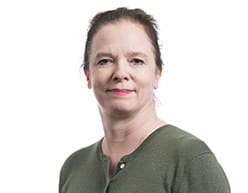It’s been three years since Trowers & Hamlins launched its first report on social value and its impact on development and 12 months since the second, but how much has changed?
One of the issues that sparked the research was the inability to demonstrate, in a meaningful way, the return on investment that “placemaking” or social investment has for real estate. What was clear was the need to make social impact more of an integral part of the valuation process.
There has long been a requirement for councils to demonstrate best value before selling land or entering into development agreements but it needs to go further than that. Being able to more accurately demonstrate the correlation between social value and financial returns is not far off thanks to technology and data. If this can help change the valuation process then it will be a game-changer, but it is a big piece of work. But that doesn’t mean progress hasn’t been made.
"How you create a place, how you create social value, is vitally important to creating economic viability and the dialogue around social value has moved on since our first report. It’s no longer a taboo subject, it’s not regarded as airy-fairy, it’s recognised as a real thing,” says Sara Bailey, Head of Real Estate at Trowers & Hamlins.
To help move the dial further precedence needs to be set, evidence gathered and some developers and tech companies are working on this. For example, U+I has been working with RealWorth to assess the social impact of its existing projects to demonstrate return on investment.
Arup is also doing a lot of work looking at the ‘total value’ of infrastructure and development in which it is assessing a wider range of benefits to what is traditionally measured. And its work isn’t just focused on the UK but globally.
There have also been some high-profile funding deals based on social and environmental impact which require certain social or sustainability targets to be met to access lower borrowing costs.
And the interest in software and data solutions is growing. “We have probably seen about six or seven different people in the past few weeks who have tools that they are developing or promoting,” says Bailey.
Aecom’s analytics team is looking at measuring the legacy impact of a project so that social value becomes a formative part of development design and plans (see overleaf).
In the same way that tools for measuring the energy efficiency and wellness of buildings have become widely recognised – BREEAM, for example – it is hoped that tools for measuring social value become the accepted norm. As more evidence is gathered demonstrating a tangible return on investment, this will, no doubt, be a powerful force for change.
The next phase of our work on social impact will explore prosperity in more detail and what it means for the wider community, particularly when you have a successful city centre. It takes more than an injection of cash to create prosperity, you need to determine what makes a particular place economically valuable. For example, what might make a difference to Manchester’s prosperity will be different from Stockport.
With that in mind, we will be travelling the country hosting a series of City Exchange events to explore what makes towns and cities prosperous and how to develop in an inclusive way.
"All this is hopefully leading to a point where social value is regarded as part of the norm not just something that is nice to have,” says Bailey.
Aecom analytics: A tool for measuring the legacy of a project
Most tools for measuring social value concentrate on skills, training and employment for local people during construction. This is a really good starting point but Aecom has developed a series of design tools which look at the legacy of the project, the value created for the community beyond completion.
The tools use different measures and data to determine ‘liveability’ based around social, economic and environmental considerations. Social incorporates health, well-being and cultural identity, for example how much open space there is within a 5 to 10-minutes’ walk or how many amenities and facilities there are.
Economic measures such as workplace provision, the diversity of that provision and accessibility by public transport together with the availability of cafes, restaurants and other facilities workers like to access. And environmental measures things such as availability of sustainable transport, walking distances to amenities and pollution levels.
The aim according to Eime Tobari Director of Urban Analytics at Aecom is to encourage developers to embed social value into their projects much earlier on. “We will do a baseline analysis then plug in the development to assess how it works for the wider community. The idea is that you start measuring social impact at an early stage rather than waiting until the design is fixed and doing the impact assessment at the end,” she says.
If such a data modelling tool is used earlier in the development process, social value considerations could influence the overall design of a scheme and it could also help with stakeholder engagement.
“I think technology will play a part in shifting the mindset [to social value] but we aren’t there yet,” says Tobari. If those focused on technology can combine their skills and knowledge with those of urban designers then she thinks it will make a big difference.
